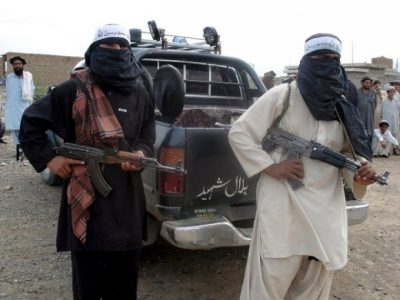
Deceased ISIS-Khorasan Province leader was trained in US-blacklisted madrassa in Pakistan
On May 7, 2017, U.S. forces in Afghanistan confirmed that Abdul Hasib, the chief of the Islamic State of Iraq and the Levant-Khorasan Province (ISIS-K) , also known as Wilayat Khorasan (WK), in Afghanistan, was killed in a combined Afghan/US raid in Nangarhar province.
This raid resulted in the death of several other high ranking ISIS-K leaders and 35 ISIS fighters. Two U.S. Army service members also lost their lives.
High-level U.S. sources have revealed that Abdul Hasib was in his mid-30s and hailed from the Azara district of Logar province in eastern Afghanistan.
However, this ISIS-K leader was educated in two of Pakistan’s seminaries, viz. the Jamia Imam Bukhari and Ganj Madrassa of Peshawar, both with links to the Pakistan-based terrorist group Lashkar-e-Tayyiba (LeT). Abdul Hasib also studied at ‘Darul Utum Faizul Quran’ located at Miramshah in Waziristan Agency and linked to Haqqani Network (HN).
As a result, Hasib had connections not only with the Haqqani Network and Al Qaeda but also with the LeT, the terrorist group linked to the 2008 Mumbai attacks.
Both Jamia Imam Bukhari and Ganj Madrassa are controlled by Jamaat-ud-Dawa ila al Quran wal Sunna (JDQS), with known connections to the LeT.
In August 2013 , Ganj Madrassa, which had been on the international radar for terror-linked activities, was placed in the US designated list and imposed financial sanctions. The madrassa was identified as a terrorist training centre where students, under the guise of religious studies were radicalized to conduct terrorist and insurgent activities. It was also recorded that under Aminullah’s leadership, Ganj Madrassa had trained and harboured the Taliban fighters who were sent to Afghanistan.
Further, it specifies that Aminullah was recruiting LeT cadres at the madrassa and, as late as 2012, hosting Al Qaeda (AQ) operatives there. Shaikh Aminullah in 2009 had already been designated by both the US and United Nations for providing support to jihadi groups in the Af-Pak region.
Despite these clear links to terrorist activities, madrassas like Ganj madrassa have continued to flourish in Pakistan. It has faced no visible financial problems despite sanctions. The only explanation to why they thrive is the support received by such institutions from Pakistan’s security agencies, who use them as training grounds for terror groups like the ISIS-K.
It is no secret that after the weakening of the ISIS-K in mid-2015, when it had lost most of its top leaders, Pakistan-backed groups took over the rein of the group. It then started targeting Afghan Security Forces and carrying out large scale attacks against civilians particularly in Kabul. The Pakistan army also started pushing tribal fighters from its territory into Nangarhar in order to fight on behalf of this new ISIS-K or WK.
The U.S.designated ISIS-K as a Foreign Terrorist Organisation (FTO) in January 2016. But with continuing State support from Pakistan, groups like the ISIS-K will endure sanctions, and keep on attacking Afghan and Western targets in Afghanistan.
Source: Outlook India





